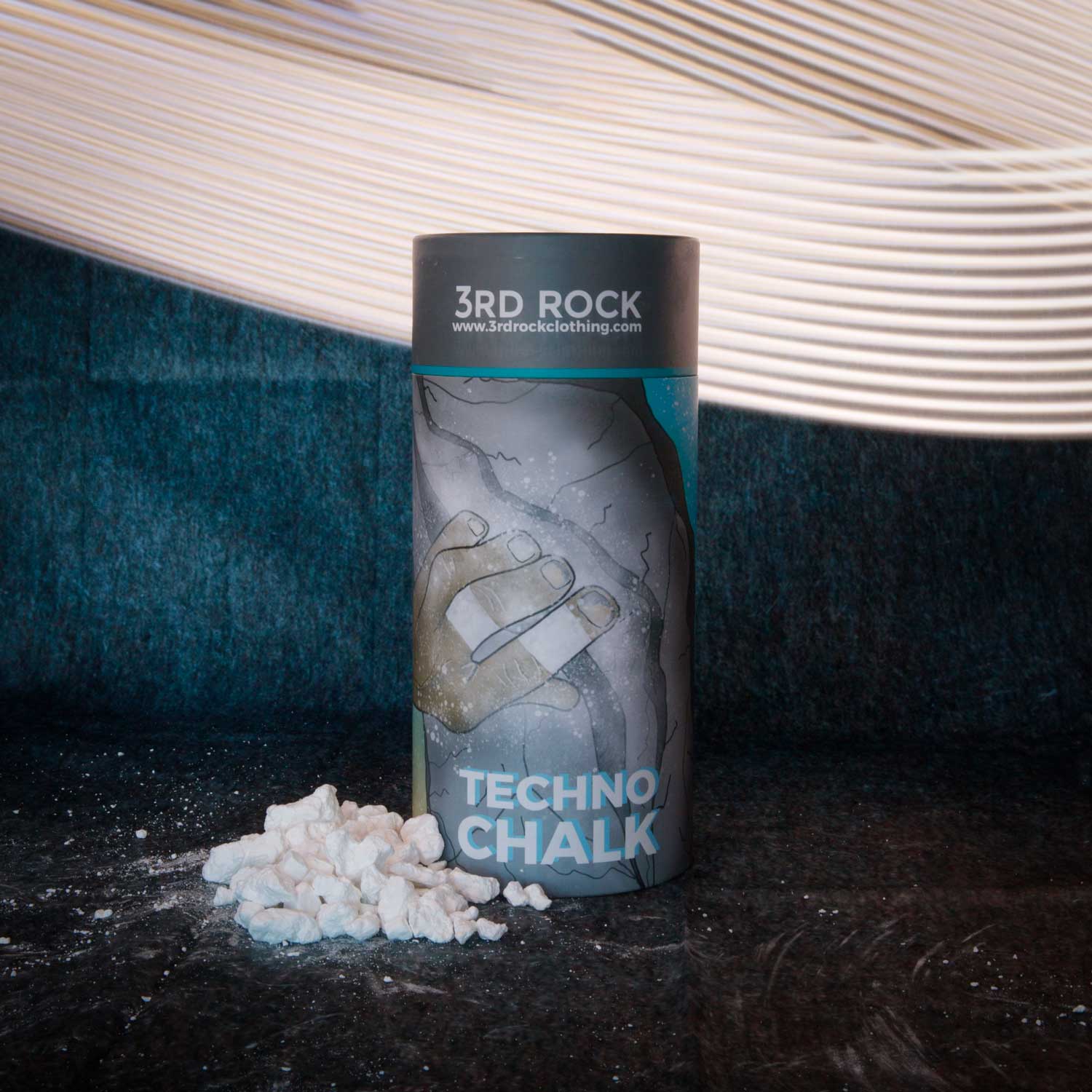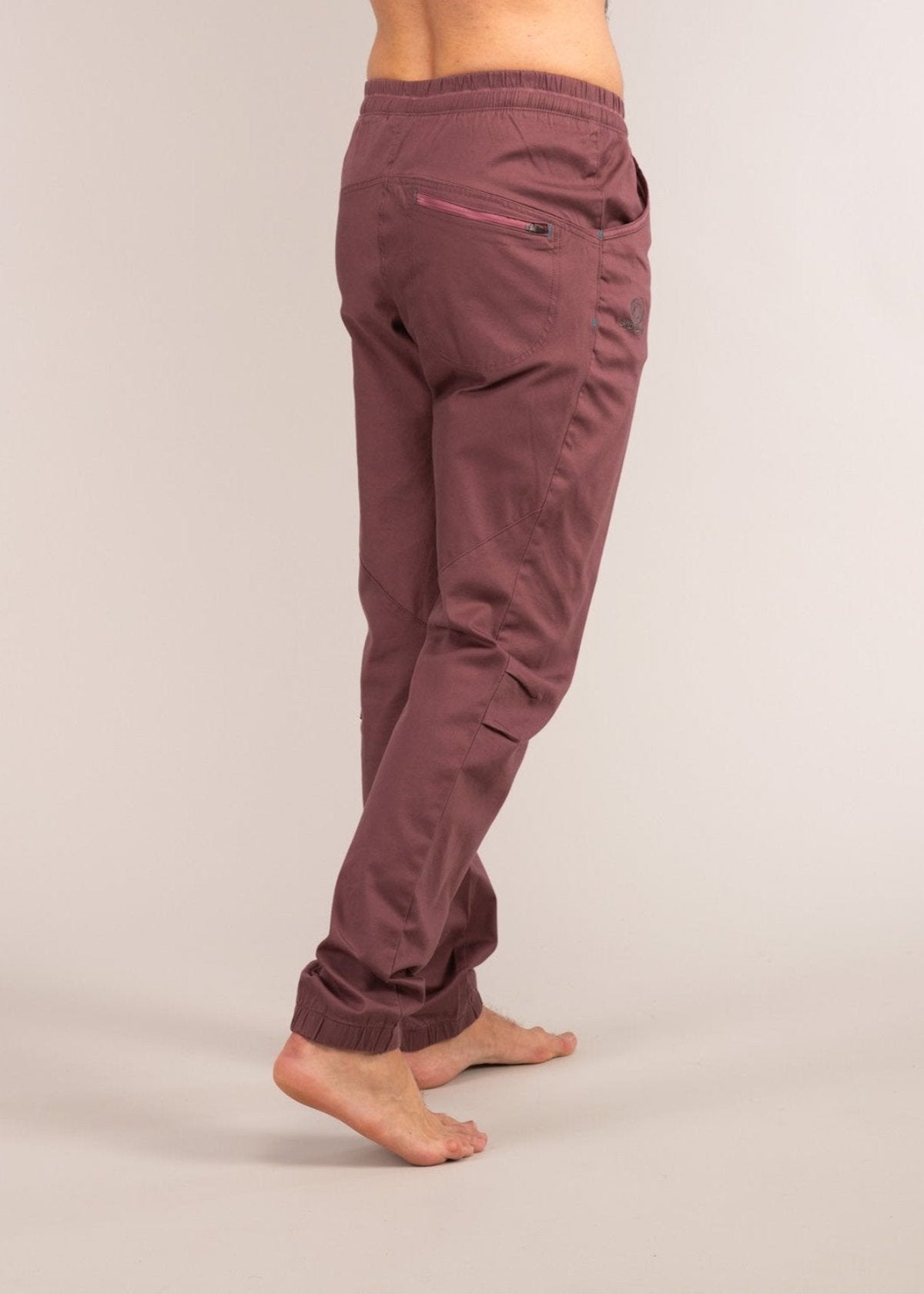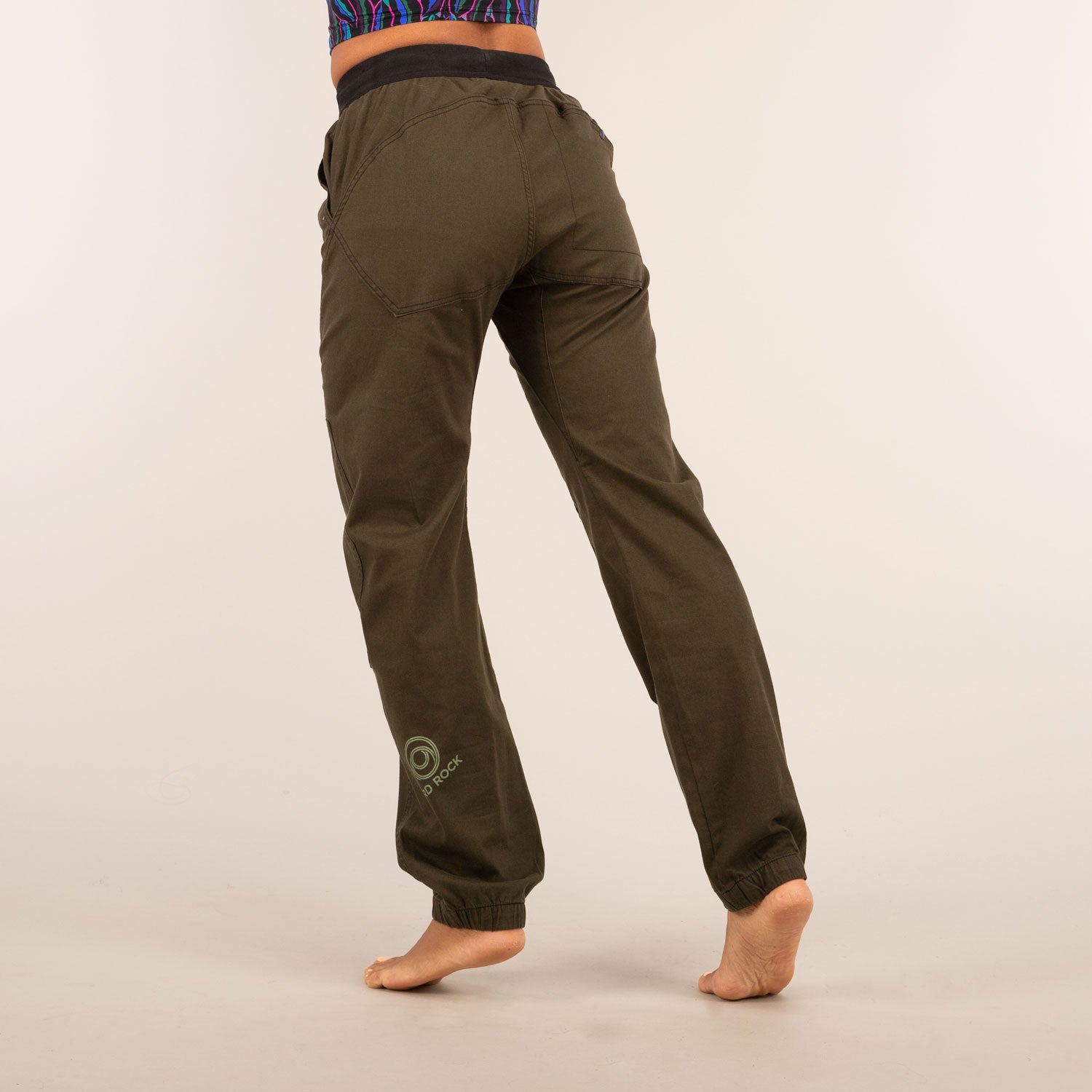Breaking it down: The different climbing styles
Written by our resident trad dad, Guy.
“The first time I clung to a rock face, feeling the pull of gravity, I was hooked. Climbing isn't just a sport; it's a personal odyssey, a mental and physical experience, and an intimate engagement with the natural world.
It's a realm where challenge coexists with serenity, and every climb tells its own vivid story. I know it sounds a bit dramatic, but there is something about climbing, especially outdoors, that goes beyond traditional “sport”.
Bouldering in North Wales during our Autumn 2023 photoshoot.
As we ascend into the climbing world (excuse the pun), we're going to explore the various styles that make this sport so fascinating.
We'll look at bouldering, known for its intense, short bursts of energy and the need for quick thinking. Then there's sport climbing, which requires a good rhythm and endurance as you make your way up longer routes.
Traditional climbing, or 'trad climbing', asks for a deep respect for the natural environment and involves placing your own protection as you climb.
Alpinism takes us to greater heights, focusing on long mountain ascents that test your stamina and mountaineering skills.
And let's not forget indoor climbing, where a strong sense of community thrives within the gym walls.
Each of these styles brings its own set of challenges and rewards, and they're all part of the broader climbing scene.
They're not just different ways to climb; they reflect the varied interests and skills within the climbing community.
So, get your climbing shoes ready, grab some chalk, and let's get into the heart of what makes climbing such an exciting world to be part of..
Bouldering 💪
Mikey & Jerome, 2 of our ambassadors, climbing in Hoya Moros with a local crusher
Bouldering is all about tackling short but intense routes known as 'problems', without the aid of ropes or harnesses.
This style of climbing demands a burst of power and a laser-like focus, as climbers navigate their way through complex sequences that test both body and mind.
It's not just about strength; it's about strategy, precision, and the ability to solve the puzzle that the rock or wall presents.
Like many climbing styles, one of the special challenges of bouldering is the mental game, just in a different way than say sport climbing: Each problem requires careful consideration and planning.
If you fall when bouldering you need to consider your landing, whereas other disciplines the rope & gear catches you.
When bouldering you might find yourself staring at a route, visualizing your moves, and mentally rehearsing the sequence before you ever touch the wall.
You'd also see this in sport climbing, but because bouldering routes are typically high intensity, they demand a great deal of dynamic & explosive physical strength to send (climbing slang for ascend/complete).
Pushing climbers to their bouldering limits the mental game is often reflected in either the danger element (high ball, risky fall etc) or the fact that you have been trying this 9-move wonder for that last 2 weeks and kept falling on the 8th move.
Charlie & Emma approaching the boulders at Robin Hood's Stride in the Peak District arms with their bouldering pad and our Alex fleece.
"I recall a particularly challenging problem that had stumped me for weeks. It was a slightly overhang boulder with a series of tiny, sharp and unforgiving holds that seemed nearly impossible to hold.
Time and again, I fell, each attempt teaching me something new about the route and about my own capabilities.
The moment of triumph came unexpectedly one evening, when everything just clicked – the sequence I'd visualized, the precise body positioning, and the controlled, explosive power needed to reach the final hold.
That successful ‘send’ was more than just a physical achievement; it was a mental breakthrough, reinforcing the importance of perseverance, focus, and the willingness to learn from each fall. Typical “Last ‘go’ best ‘go’” scenario before we packed it in for the night."
Bouldering, with its blend of physicality and problem-solving, offers a uniquely satisfying climbing experience.
Sport climbing 🧗♀️
A great close-up look at sport climbing. With the drope running through a quickdraw to catch the climber, and the next quickdraw she needs to reach. Taken from our Summer shoot in 2023.
Sport climbing takes the climbing experience a notch higher, quite literally, with its bolted routes that allow climbers to ascend with the safety of a rope.
This style of climbing is a true test of both endurance and technique, as climbers tackle longer routes that require sustained effort and strategic use of energy. The bolts provide protection, but it's up to the climber to clip in as they progress, making for a thrilling blend of security and challenge.
One of the unique aspects of sport climbing is the necessity of route reading. Before embarking on a climb, you'll often find climbers at the base of the route, eyes tracing the line of bolts, mentally charting their path. This pre-climb ritual is crucial for identifying rest spots, crux moves, and the most efficient way to navigate the route... and it looks like a funny dance:
Here is Adam Ondra, one of if not the world's best rock climber, route reading and working through the moves...in a funky way. Credit: Adam Ondra's Youtube Channel
The mental game comes into play heavily in sport climbing, especially on those longer, more demanding sections where physical fatigue starts to set in. Pushing through these challenging parts requires a strong will, deep focus, and an unwavering belief in one's abilities.
"I remember a particular route that became a significant part of my climbing journey. It was a beautiful, winding line that cut across a sheer face, with a section in the middle known for its difficulty.
I attempted this route several times, each time falling at the same spot. With each attempt, however, I learned something new – about the route, about my technique, and about how to conserve my energy.
The day I finally sent the route, it wasn't just a physical victory; it was a testament to the power of persistence, strategy, and the mental strength that sport climbing demands.
It taught me that sometimes, the key to overcoming a challenge isn't just to push harder, but to climb smarter, to rest when needed, and to approach each move with intention and precision."
"Trad" climbing
Vicki Trad climbing in North Wales in our LUNA bra & MARGO trousers. Look at how much gear is needed when trad climbing!
Traditional climbing, or 'trad climbing' as it's affectionately known, is the essence of adventure climbing.
In trad climbing, you ascend natural rock faces, placing your own gear for protection along the way.
This style harks back to the roots of climbing, where climbers rely on their judgment and experience to select and place cams, nuts, and other protection devices in rock fissures and crevices.
It's a pure form of climbing that emphasizes the harmonious relationship between the climber, the gear, and the rock.
The challenges of trad climbing are as much mental as they are physical. Mastering gear placement is a critical skill, requiring a deep understanding of rock quality, the physics of falls, and the strengths and limitations of different types of protection.
Every piece of gear placed is a decision, a small act of faith in your abilities and understanding of the rock. Route finding adds another layer of complexity, as trad routes often lack the clear markers found in sport climbing.
This demands a keen sense of direction and the ability to read the natural lines of ascent, often while dangling from a precarious position.
James place a "cam" in a crack to catch him in case he falls.
Self-reliance is the cornerstone of trad climbing. Out there on the rock, it's just you, your partner, and the choices you make.
There's a profound sense of responsibility that comes with trad climbing, not just for your own safety, but for that of your climbing partner and the integrity of the rock itself.
It's a style of climbing that teaches patience, respect for the environment, and a deep trust in your own skills and judgment
Despite the complexities and the inherent challenges that come with trad climbing, it can be pursued safely with the right preparation, knowledge, and respect for the climbing process.
The climbing community is deeply committed to safety, and there's a wealth of resources available for those looking to hone their trad climbing skills.
From climbing courses and workshops that focus on gear placement and safety techniques to the mentorship provided by experienced climbers, there are ample opportunities for newcomers to learn the ropes in a controlled and supportive environment.
A typical trad rack: Friends/cams, nuts/chocks, carabiners, quickdraws, rope (sometimes 2 for 1 climb), harness, helmet, climbing shoes, approach shoes, slings, belay devices and gloves... and yes sometimes you need all of this! Photo from outdoorrackbuilder.com
Moreover, trad climbing opens up a world of possibilities for exploration and adventure. Across the globe, there are iconic destinations that beckon trad climbers with their unique geological formations and breathtaking landscapes.
From the storied crags of Yosemite National Park in the USA, with its legendary big walls, to the rugged beauty of the Scottish Highlands and the sun-kissed cliffs of Australia's Blue Mountains, trad climbing offers a passport to some of the most remote and stunning locations on the planet.
Each of these places presents its own set of challenges and rewards, providing climbers with a rich tapestry of experiences that are as diverse as the landscapes they traverse.
The thrill of trad climbing lies in its unpredictability and the sense of adventure it brings.
Each climb is a journey: You know where you start and have a general plan, but more often than not, it doesn’t quite unravel the way you thought it would 🙂
Alpinism: The ultimate mountain experience
Up in the snowy mountains of Scotland. Photo from our Ambassador Holly's winter expeditions. Photo by Jonathan Bean.
Alpinism represents the zenith of climbing, where it merges with mountaineering and, at times, ice climbing, to form a multifaceted discipline that is as challenging as it is rewarding.
It's an expeditionary pursuit that takes you to the world's highest peaks, requiring a blend of technical climbing skills, high-altitude acclimatization, and the ability to navigate glaciated terrain.
Alpinism is not just about reaching the summit; it's about the journey, the commitment, and the deep connection with the mountain environment.
Our ambassador Holly kitted out taking on the brutal winter conditions.
The challenges of alpinism are manifold. Dealing with high altitude demands not only physical fitness but also an understanding of how to acclimatize effectively.
Weather in high mountain environments is notoriously unpredictable and can change from benign to hostile in a matter of hours, requiring climbers to be adept at reading weather patterns and making quick, informed decisions.
The diversity of skills required for alpinism, from ice climbing to crevasse rescue, adds to the complexity of expeditions, making thorough preparation and versatility crucial.
Indoor climbing: The community & training ground
A typical climbing wall, with different colour coded routes and pre-placed quickdraw to clip in to.
Indoor climbing gyms play a pivotal role in today's climbing ecosystem.
They serve as accessible, controlled environments where both new and experienced climbers can hone their skills, train consistently, and connect with a vibrant community of like-minded individuals.
Indoor climbing has democratized the sport, making it more accessible to those who may not have easy access to outdoor climbing locations..
One of the unique benefits of indoor climbing is its year-round accessibility, regardless of outdoor weather conditions.
This allows climbers to maintain and improve their fitness and technique, making it an invaluable training ground for outdoor pursuits.
Moreover, climbing gyms have become social hubs, hosting events, competitions, and meet-ups that strengthen the bonds within the climbing community.
3RD ROCK Warrior Imi competing at an indoor climbing competition.
"A personal turning point in my climbing journey was joining a local climbing gym. It was here that I found not just a place to train, but a community that supported and inspired me. I remember my first climbing competition at the gym; the camaraderie and collective energy were palpable. It was an environment that celebrated every climber's achievements, from the smallest personal victories to the most impressive athletic feats. This supportive atmosphere has been instrumental in my growth as a climber, teaching me that while climbing is an individual pursuit, the strength and spirit of the community can lift us all to greater heights."
Thanks for joining us to talk about the different styles in climbing. We still haven't covered everything in this article.
There are so many other disciplines out there like Free soloing, Sawanobori, Speed climbing and Ice climbing just to name a few... who knows, maybe we'll do a part 2!
Until then, be sure to check out our climbing heroes below and sign up for more journal entries like this one!
Our climbing heroes
Did you enjoy this article?
Join our newsletter to stay in the loop with more Q&As, Journal articles, and more!
May 01, 2024









